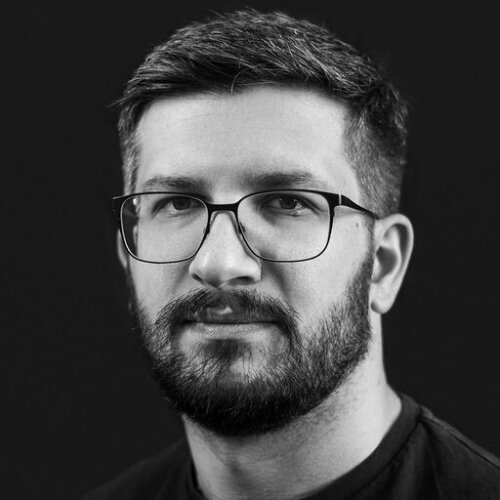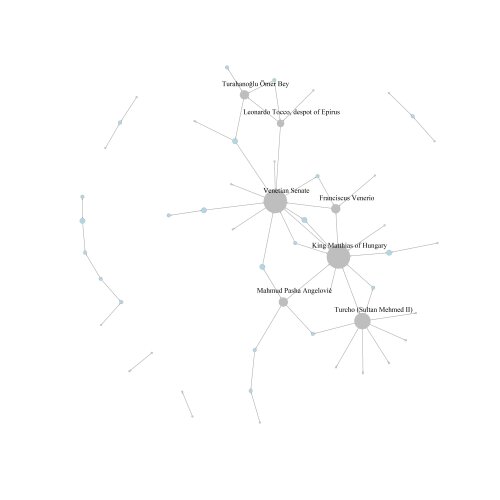Davor Salihović
I am Davor Salihović. This particular summary of my profile has of course already been written, word for word. It sits in several different volumes of Jorge Luis Borges’s Library of Babel, none of which can be directly cited, at least not in these few introductory words, since each new character changes the location of the text in the hexagons of the library. What follows, however, can be found quite easily, as parts of the text with which I continue are apparently located on page 274 of Volume 18 located on Shelf 3 on Wall 2 of Hexagon 00fihytwvwe17… and page 55 of Volume 28 on Shelf 5 on Wall 1 of Hexagon 0tb15dtif5x2… of Borges’s library. This is clearly but one of many that I or chance alone may have put together, in any case contingent on a great many things. And what these things comprise is as good a question as any, one that is sure to be answered in the best possible way by the scientific method. I have been interested in posing such questions and finding answers about the world we found ourselves in from a young age, about as many phenomena as one encounters and gets baffled by at that time. This being practically everything, I remain absorbed in the fascinating world of physics, astrophysics, electrical engineering, and evolutionary biology, the world of mathematics, probabilities, and statistics. All of these offer either tools or theories, or indeed both, that one can use to share in or improve upon the interpretation of the intricacies of the universe, but what these books of whatever particular shelves of Borges’ Library have me most involved with is history, the most intimate of all human endeavours in finding answers about ourselves and our world. Intimate, indeed, as one is bound to query the past to understand the present through musings and methods that only past-dependent present may have furnished. History therefore seems to be as good a mirror as any to reflect not only what we have learned about our universe, but how and what we have hoped to learn about it and what became of this hope.

In short, then, I am a historian by trade. As a historian, I have always tended to incorporate at least some of my interests in other sciences into my research, and have so regularly worked with what may be characterized as quantitative or, particularly nowadays, computational or digital history. My first undertakings in serious research had to do with pre-modern demographics, demographic transitions, marriage and birth patterns in pre-industrial and early industrial communities. What I found most rewarding and interesting at the time, though, was going beyond the traditional methods of demographic history, building networks of godparenthood of a small commune in 19th-century Istria and creating models that explain these networks. From then on I delved deeper into such interdisciplinary approaches and the application of computational methods in my research. Following my studies in Croatia, I studied medieval history in Budapest and was awarded my PhD in History at the University of Cambridge, under the supervision of Prof Nora Berend. During this time, my primary focus has shifted towards the medieval history of South-East Europe, particularly the frontiers and frontier societies at the time of Ottoman conquests in the fifteenth century. In both my MA and PhD theses and most of my published work, I try to explore the political, cultural, and social makeup of the areas of the Western Balkans contiguous with areas of recent Ottoman conquests. In exploring the interaction between the politics of the local populations, the Ottoman Empire, the Kingdom of Hungary, and the Republic of Venice, I try to understand how societies adapted to new circumstances in political, demographic, cultural or other ways, what emergent phenomena resulted from these adaptations and how they came about. The theses of my PhD dissertation largely rely on the spatial history of these regions, that is on the use of GIS and spatial analyses to outline the structure and understand the purpose of networks of frontier castles. Unsurprisingly, my work in this area has taken me to the archives all over the Balkans, Italy, and Central Europe, allowing me to indulge my interest in source editing.
I have applied further quantitative, particularly statistical methods in my research on medieval inquisitions and systems of control over religious dissidents. As a member of the DISSINET research project hosted at Masaryk University, together with my colleagues, I explored the spatial distribution of Waldensianism and other such movements in medieval northern Italy, and especially the patterns of denunciations, the establishment of social control through dynamic interactions between the institutions and the populace, and the sex-based peculiarities of inquisitorial procedures. In addition to spatial analyses, this research relies first and foremost on techniques of social network analysis and pioneering inferential statistics for network data.

Illustration: The network of correspondence and negotiations about peace between Venice, Hungary, and the Ottoman Empire during the 1460s. This visualization highlights those individuals or institutions that occupied prominent roles in diplomatic exchanges. It suggests that mediators played a pivotal role and hints at how space as well as latent personal or political networks influenced the flow of information.
I continue in a similar vein in DiplomatiCon. Whereas methodologically my work continues to rely on the application of spatial analysis, statistics, and social network analysis, substantively it builds on my previous work on the history of diplomatic or other sorts of relations, contacts, exchanges, and adaptations across the confinium multiplex of the late-medieval Italian-Central European-Balkan-Ottoman context. By examining the dynamics of networks of cross-border exchange and the spaces that it required and built, I hope to shed more light on the emergent phenomena that eventually came to characterize the frontier and near-frontier societies. This encompasses not only those who inhabited the frontiers but those who reacted at a distance, too, as naturally the coping mechanisms of the locals and the coping politics of the distant centres influenced each other in a runaway positive feedback, one that was often in the hands of those ‘in the field’, as it were. In that sense, I aim to extend the set of methods that one might call upon in investigating these phenomena, by finding inspiration in the corpus of work on complex systems and the recent developments in that field. Being an in-house specialist on statistics and social network analysis of sorts, I also hope to collaborate with my colleagues in the team, offering whatever help I may in these matters.
The probability that this text above has come about by pure chance is roughly 1/266380 , which is so infinitesimally small that it is practically zero. The famous monkey sitting at a typewriter (and understanding, if not speaking, just enough English to compile this) would indeed therefore require infinite time to write it. Although it may have seemed as long to me, I managed to accomplish this in slightly less time, allowing myself to surmise that there may well be something there that brought just the right lexicon to my mind, these and not some other grammar, or tenses, or stylistic peculiarities. This, of course, is my fascination with the kind of history DiplomatiCon strives to investigate, one that I find far more intimate than a random person might. Just imagine then the probability of finding a similarly inclined group of people.